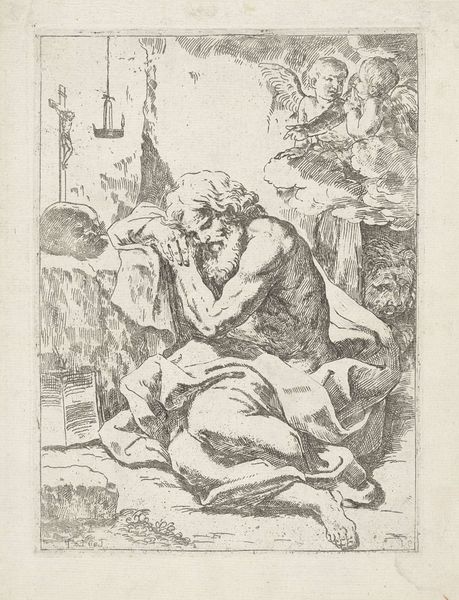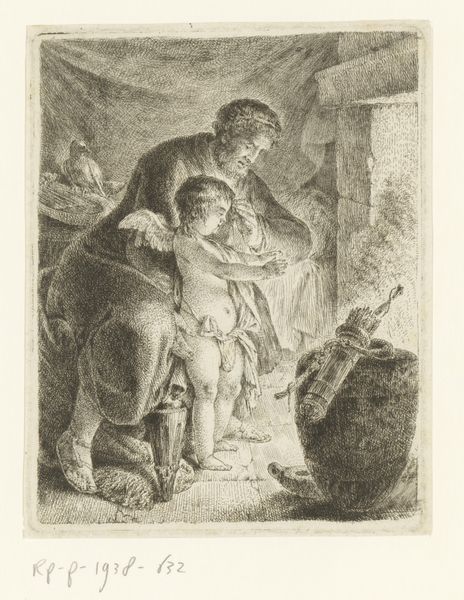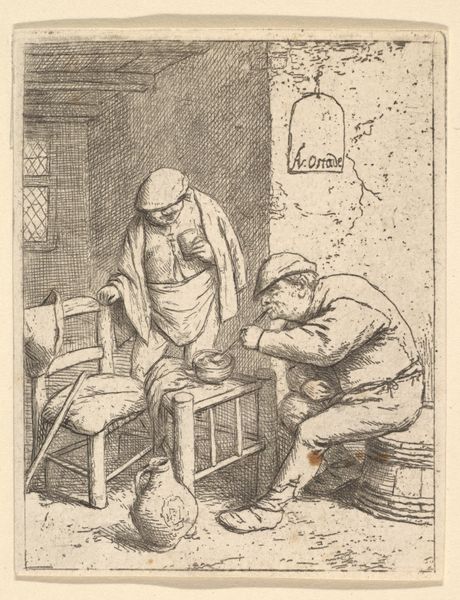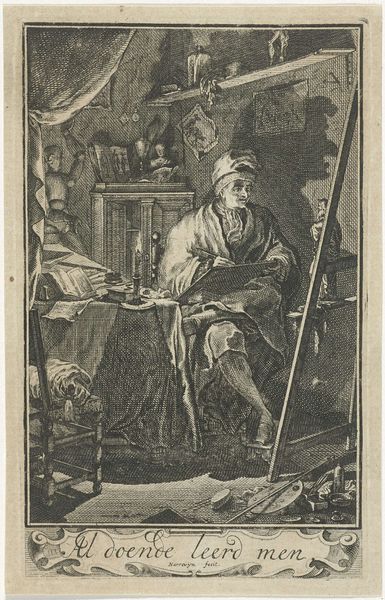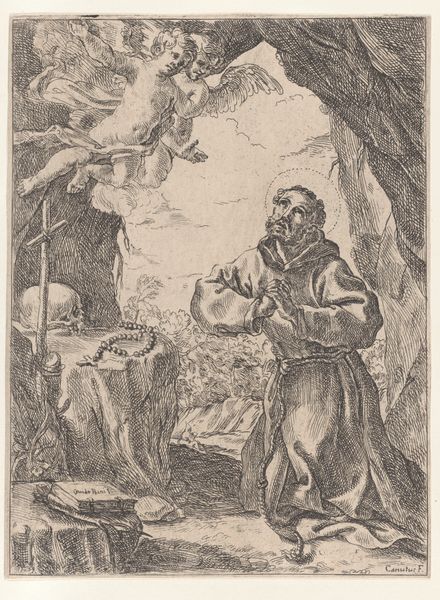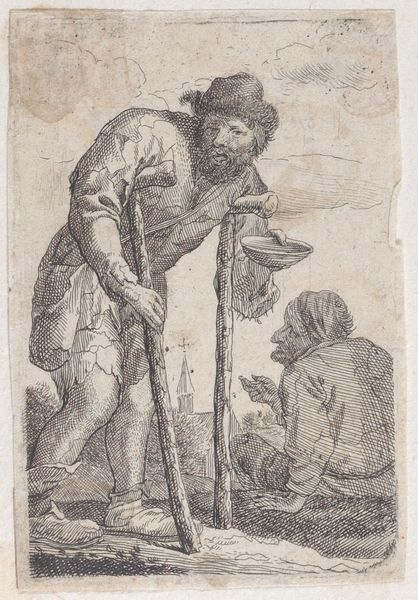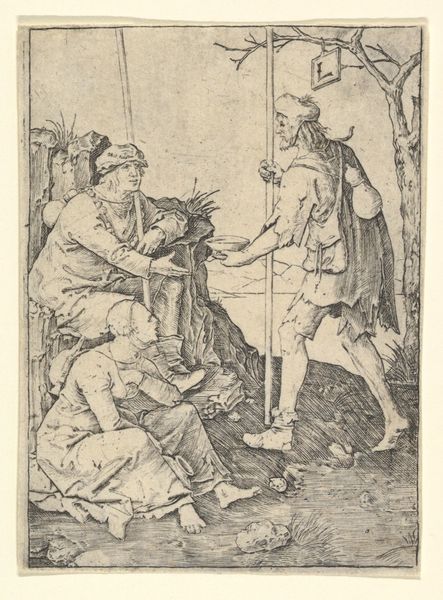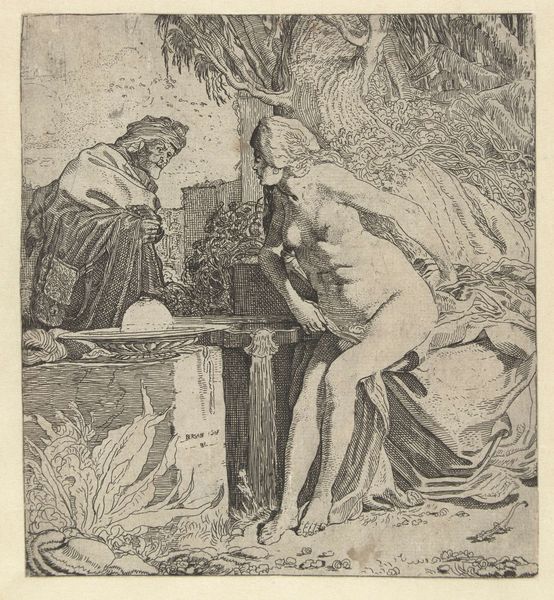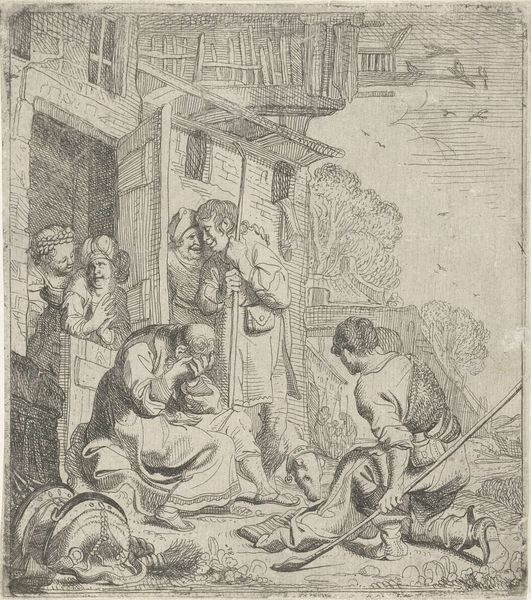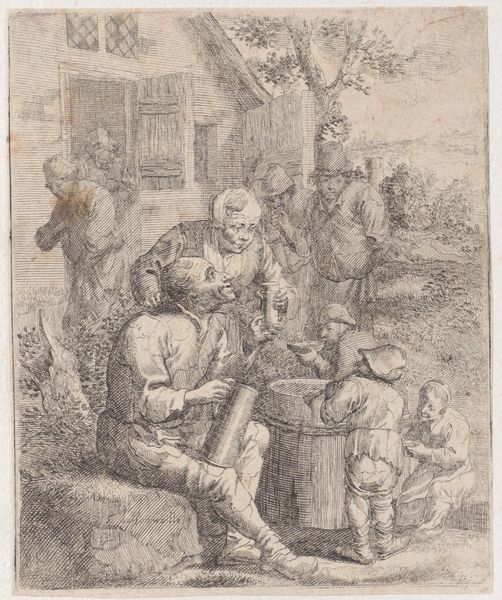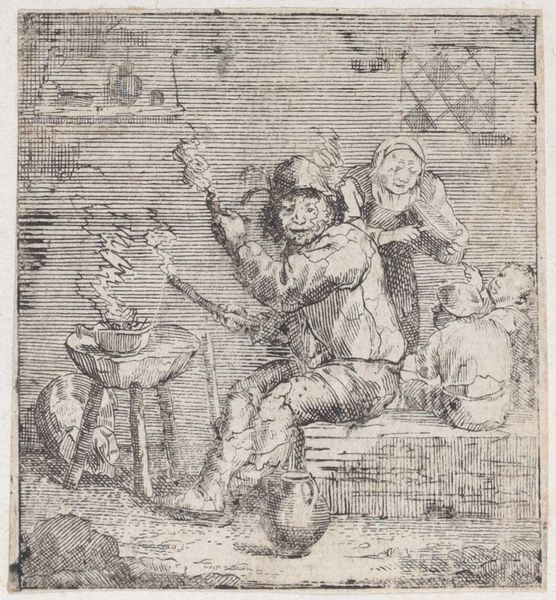
drawing, print, engraving
#
drawing
#
narrative-art
# print
#
coloured pencil
#
genre-painting
#
history-painting
#
engraving
Dimensions: 207 mm (height) x 152 mm (width) (bladmaal)
Editor: So, here we have “To children making fire,” an engraving by an anonymous artist, sometime between 1650 and 1699. It’s pretty striking – the starkness of the engraving highlights the everyday actions of these children. How would you interpret the artist's approach to this piece? Curator: From a materialist lens, I am fascinated by the process of production here. Think about the engraver, meticulously carving lines into a metal plate, a labor-intensive process to represent what? The mundane task of children building a fire? It compels me to consider the social context: who was this print made for, and what value did they place on depicting this scene? Editor: That's interesting. I was more focused on the artistic choices, the classical figures against what looks like a dark background... but you're thinking about the "why" behind making it. Curator: Precisely. And “how”. The choice of engraving—a technique allowing for reproducibility—suggests it was perhaps intended for a wider audience than a unique painting might reach. What does it mean to democratize this scene through a readily available print? Was this aimed at educating the upper class in the habits of the lower or meant as art in peoples' home to enjoy for aesthetic pleasure? It becomes a study of consumption, of artistic labor becoming a commodity. Editor: I see what you mean. By examining the *means* of production – the engraving process – we're uncovering potential social commentary. Curator: Exactly! It is crucial to see beyond the subject matter. Instead, analyze how its creation and distribution connect to the economic and social currents of the time. Editor: Wow, I never really thought of approaching art history this way. I am accustomed to examining technique. But thinking of these items, also, as consumer products gives me so much to consider. Thanks! Curator: My pleasure. Hopefully, by focusing on these historical items and looking at them more materially, our interpretation can deepen for everyone!
Comments
No comments
Be the first to comment and join the conversation on the ultimate creative platform.
